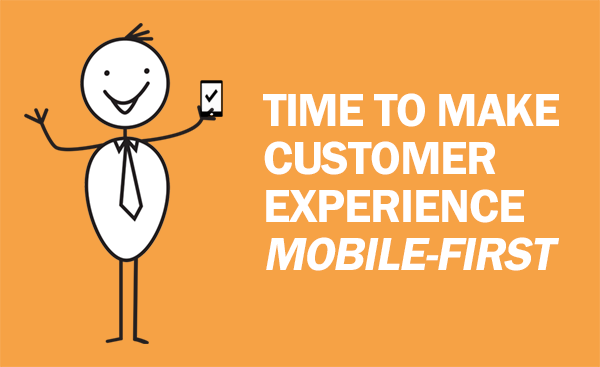Time to make the customer experience mobile-first

Last week Google updated its search algorithm, rewarding mobile-friendly sites with higher rankings in search results. This is a further demonstration that we’re reaching a tipping point when it comes to how consumers interact with brands digitally. In fact, eMarketer estimates that this year UK adults will spend more time every day (2 hours 26 minutes) with their mobile devices, such as smartphones and tablets, compared to traditional desktop or laptop computers (2 hours 13 minutes). The time spent on mobile devices has grown nearly five times since 2011, showing the speed of the change. Nearly 75% of US mobile users now have smartphones – a figure that rises to 85% for the millennial generation.
So what does this mean for the customer experience and the service that brands offer to consumers? Here are five major areas to focus on:
1. Be mobile-first
As with every channel, you need to take the time to see how consumers are interacting with you on mobile devices. Analyze how different groups use different devices and build your strategy around customer needs, rather than trying to second guess what they want.
As a start point every company needs to ensure that its website is optimized for mobile viewing. This doesn’t just mean that it displays well on smaller screens, but that the sort of information that consumers are searching for when on the move is displayed clearly and is easy to access. For example, if you are a retailer include information such as store addresses and opening hours where it can be found quickly. Design is also important - Google’s mobile-friendly guidelines recommend ensuring that tappable buttons are not too close to each other, avoiding the danger of people hitting the wrong one. If you offer an app make sure that it is kept updated across all devices that your consumers use.
2. Mobile is a device, not a channel
Smartphones and tablets contain multiple channels that are part of the customer experience. Consumers can browse your website, download and open your app, send you an email, Tweet or instant message or simply use the phone to call you. This means that increasing use of mobile devices will lead to a greater number of interactions across all channels – so make sure you have the resources in place to provide fast, consistent service to consumers. Roll out technologies such as self-service and chat so that they can be accessed through mobile devices, either through optimized websites or apps, in order to give consumers the widest possible range of ways of contacting you.
3. Be joined up
However they contact you, customers expect seamless service and don’t want to have to repeat themselves. This is true of all channels, but the portability of mobile devices mean that it is vital to integrate digital and physical channels, so that staff in stores or branches can immediately access customer details, even if a transaction began online.
4. Harness the specific advantages of mobile devices
The ability to provide location-specific information is a key difference between a desktop PC and a smartphone. Make sure you use this information to deliver a personalized customer experience, such as by offering discounts or vouchers to those that have downloaded your app when they are close by a store or restaurant. Encourage people to use mobiles and increase engagement by offering free Wi-Fi in-store and provide scannable displays where people can find out more about products and services.
5. Be prepared for unstructured interactions
The combination of small keyboards and the fact that they are used on the move mean that the vast majority of mobile interactions are unstructured digital text. It is easy for spelling mistakes to creep into communications, and people will ask the same question in different ways. Understanding meaning and tone is therefore vital, so consider investing in linguistic technology to help with the context of questions.
We are now in a mobile-first world. This means that whatever sector you operate in, you need to build and implement a mobile customer service strategy that goes beyond the basics if you want to engage and retain consumer loyalty.







Comments